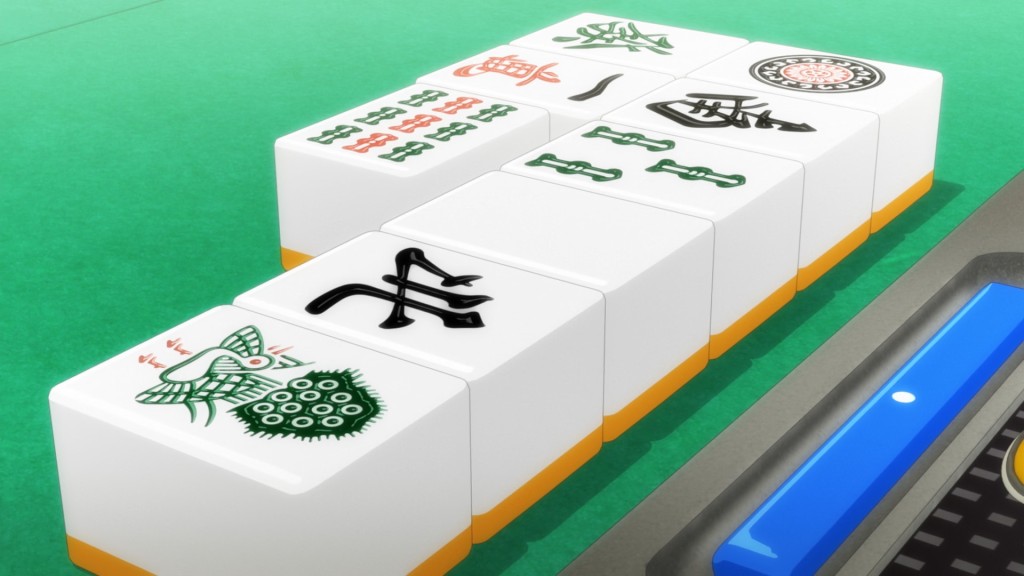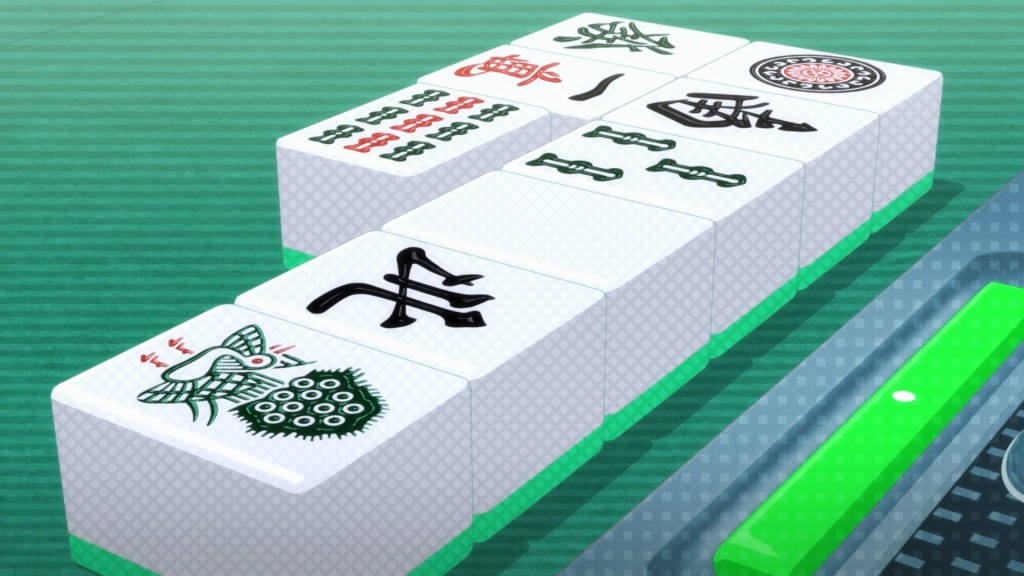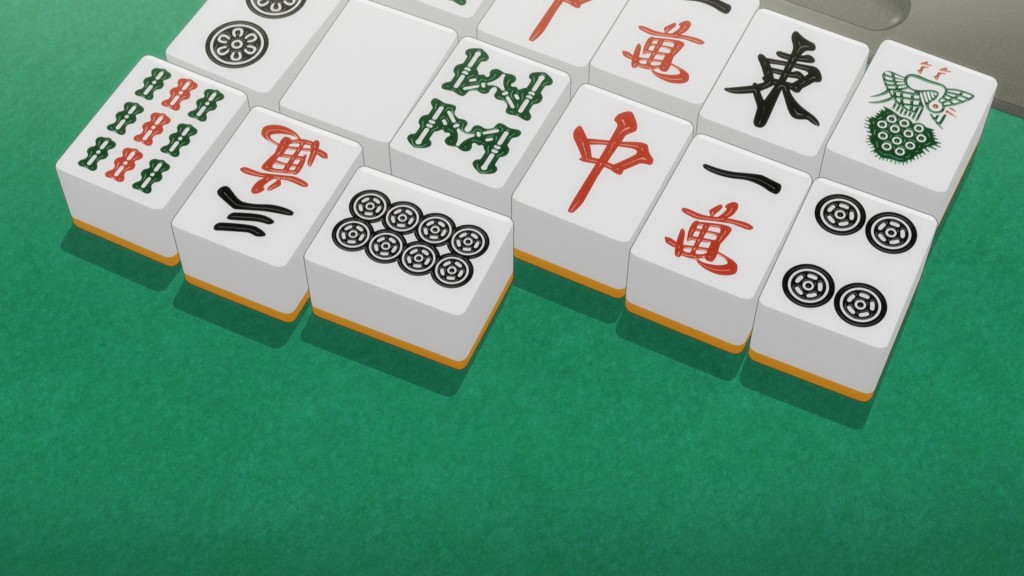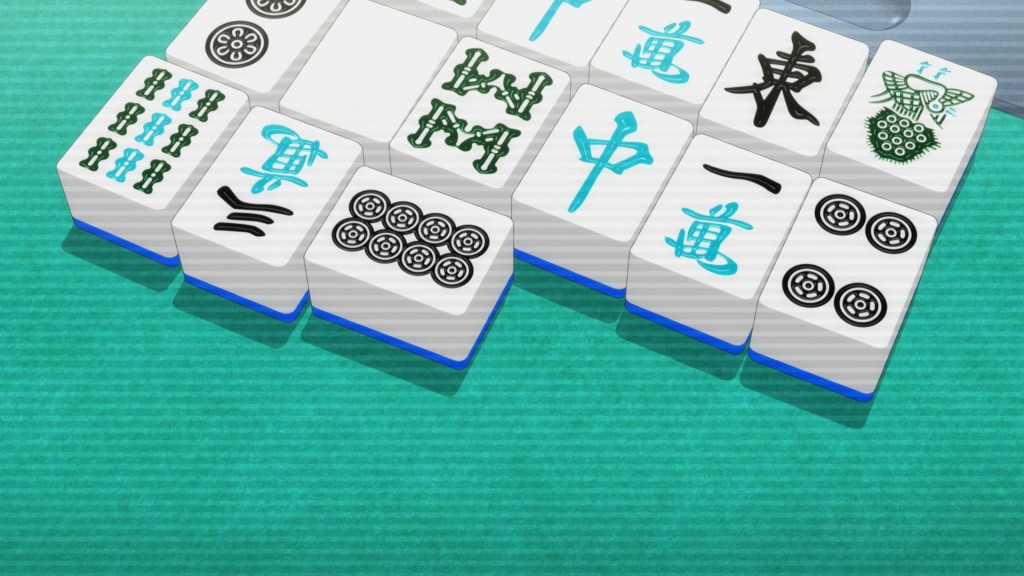Welcome back to the Understanding Mahjong series! Last time, we went over the first episode of the new anime Pon no Michi. Today, we’ll be covering everything mahjong in second episode of the series.
Note: I know mahjong, but not anime or manga (or even proper Japanese). Anything written outside of mahjong strategy and terminology was just looked up on the internet (including translations). If I’ve missed or misrepresented any anime or manga references, or if there’s anything else you’d like to add, let me know in the comments.
Tsubame Gaeshi
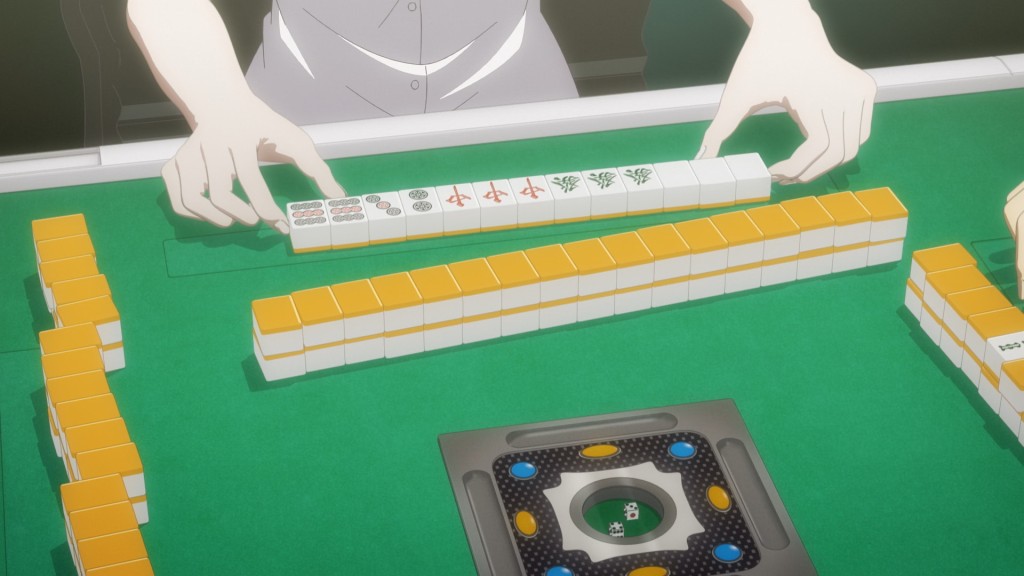
The episode starts off with Nashiko playing mahjong under a single spotlight. As she receives her first 13 tiles, she swaps her hand with some rigged tiles in the wall. She reveals her hand, showing the Big Three Dragons she has from the start. She suddenly wakes up and realizes it’s a dream.
Tsubame Gaeshi (燕返し, lit. Swallow Reversal) (unrelated to the local yaku of the same name or the judo throw of the same name) is a cheating technique (イカサマ, ikasama) where a player swaps their hand with tiles in the wall that they had selected beforehand. Not only does this involve being able to rig the wall, but also be able to do the switch in one quick and swift motion without anyone noticing.
Revealing your hand without it being completed is a chombo. However, this particular scene is a direct reference to a video called All Mahjong Cheating Tricks Revealed (イカサマ麻雀に打ち勝つ手口公開). In it, mahjong legend Takeo Kojima (小島武夫), AKA Mr. Mahjong, shows some cheating techniques that some people use and how they do it. (19:57 if the video doesn’t load at the right spot). Some people may know him from the famous Nine Gates win video
Props to the animators for paying attention to a lot of small details, from how Nashiko draws the tile to the tiles in the wall being slightly askew.
Teaching Them Young
As Nashiko arrives at the parlour, she meets Riche waiting by the door. Entering the parlour through the back door, Riche is hit with a wave of nostalgia, remembering the days when she was a little kid learning how to play at the parlour (outside of opening hours, as kids aren’t normally allowed into mahjong parlours).


The hand that Riche wins is a local yakuman called Daisharin (大車輪). Since it is in manzu, it is more precisely called Daisuurin (大数隣). This yaku involves having a closed hand (no calls) with two of all the simple tiles (i.e. 2, 3, 4, 5, 6, 7, 8) in a suit.
If the ruleset does not have daisharin, then the hand is worth at least 11 han (han is one of the scoring elements of Japanese Mahjong)
- Pinfu (1) (no matter which tile you win with, it can be organized to have pinfu)
- All Simples (1)
- Twice Pure Double Sequence (3) (two sets of two identical sequences. In this case, the hand has two sequences of 2-3-4 man and two sequences of 5-6-7 man and a pair of 8 man [you can also switch the 5 man and 8 man])
- Full Flush (6) (a hand consisting of a single suit, -1 han if open)
giving at least a sanbaiman (24,000 for non dealer, 36,000 for dealer).
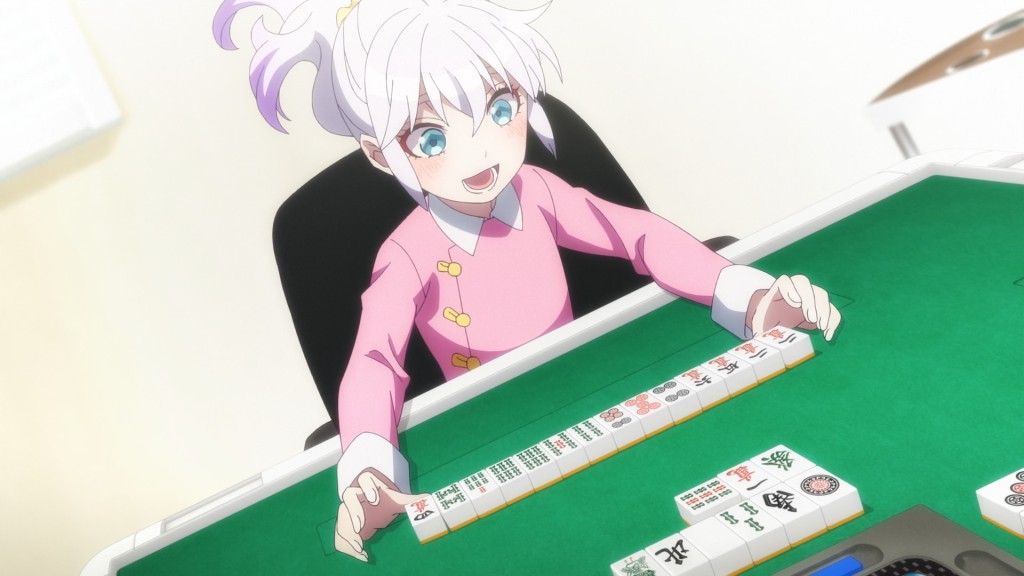

After Riche learned how to play, she started to play for real. One turn after calling riichi, she draws her winning 4 man. Counting the yaku, she has (dora is the 3 sou):
- Riichi (1)
- Ippatsu (1) (Winning within one uninterrupted go-around of riichi)
- Fully Concealed Hand(1)
- Pinfu (1)
- All Simples(1) (Having only tiles from 2 to 8)
- Mixed Triple Sequences(2) (having the same sequence in all three suits)
- Red Dora 1
for an 8 han baiman. Looking at the number of discards and the cut in the wall, Riche is sitting in the west seat, making her not the dealer. Therefore, she will get 4,000pts from each non-dealer and 8,000pts from the dealer for a total of 16,000pts.
For the observant among the crowd, this is the same scene in the opening but with the proper colours.
In the third discard, we can see the 3 sou dora. Besides the fact that it’s blasphemy to throw such a valuable tile, it indicates that she likely had the shapes for the 4-5-6 Mixed Triple Sequence early and wanted to “lock it in”. However, throwing the dora that early is risky as she would be losing one potential han if she had drawn the 7 man before the riichi (and therefore not having a chance at Mixed Triple Sequences). Especially if she still had honours in her hand, she could throw those first and see if she could pair up the 3 sou or use it in a sequence for even more value.
She’s a kid though, so it’s fine.
Why We Play
After discussing her life story, Riche begs that she be allowed to play. Meanwhile, Nashiko isn’t yet accepting that Riche be a part of her friend group’s private hangout spot. Emotions run high and the two argue. Riche tells Nashiko that it isn’t about winning or playing good players, but that she just want to have fun like she did in her childhood.
There are many reasons why we play mahjong. Some play for the competitive rush of ranking up to the top of an online ladder. Some people like to analyze the mathematical probabilities and see how artificial intelligence is changing the game. Some people just like the social aspect of it, sitting around the table with friends and just talking. The important thing is to have fun in your own way, playing in the environment and with the people you enjoy playing with.

Riche mentions that the mahjong parlours she would potentially go to (once she becomes of age) are full of men. Unlike American Mahjong (which is mostly older women), Japanese mahjong mostly has men. However, the number of female players and professional female players has been increasing over the years. In the 2019-20 season of M-League, the league created a rule where teams must have at least one female and one male player on each team. Featuring women playing in televised matches at the highest level allows the younger generation to become inspired and potentially become professionals themselves.
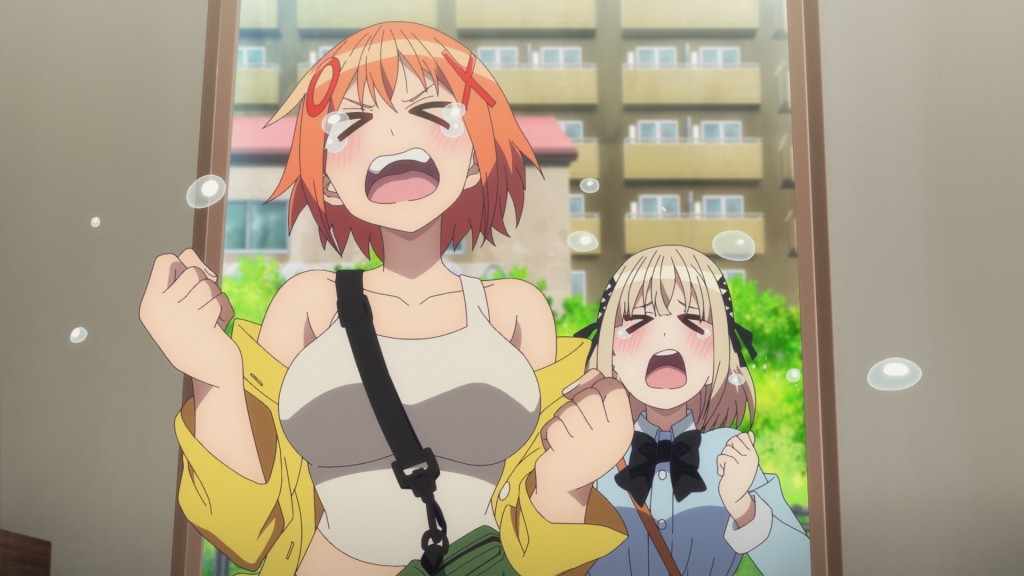
Chombo flies in and lands on top of Nashiko’s head, chirping at her and trying to convince her to let her join. After Riche cries some more, Izumi and Pai both burst in. In tears, they yell at Nashiko and tell her to let her play. Nashiko eventually gives in and lets Riche join the group.
Chombo Plays
After exchanging formalities, Riche asks if they have been playing with just three players the whole time. With eager faces, they let her know about Chombo’s mahjong prowess.
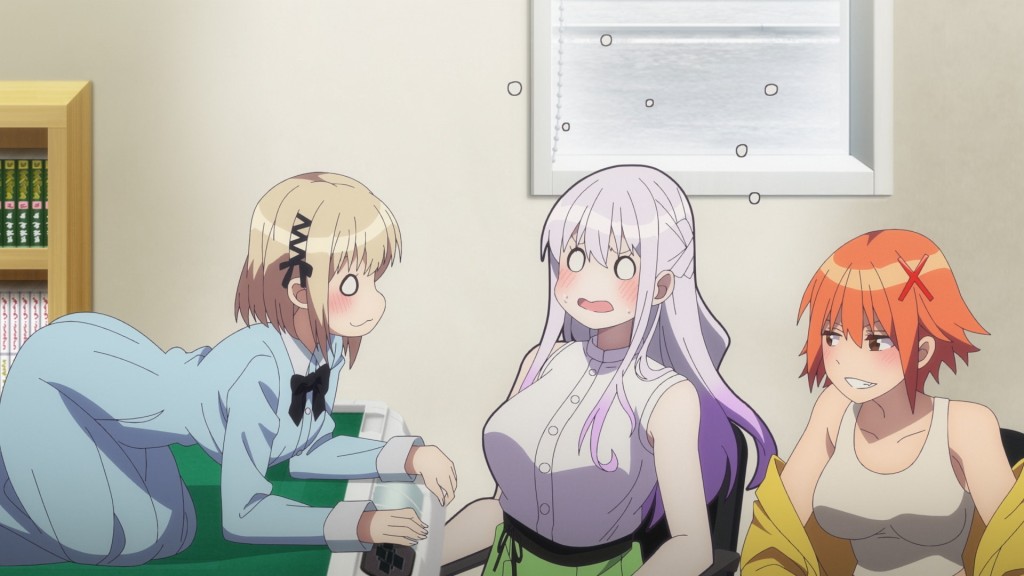
Please do not jump onto an automatic table. They are very expensive.
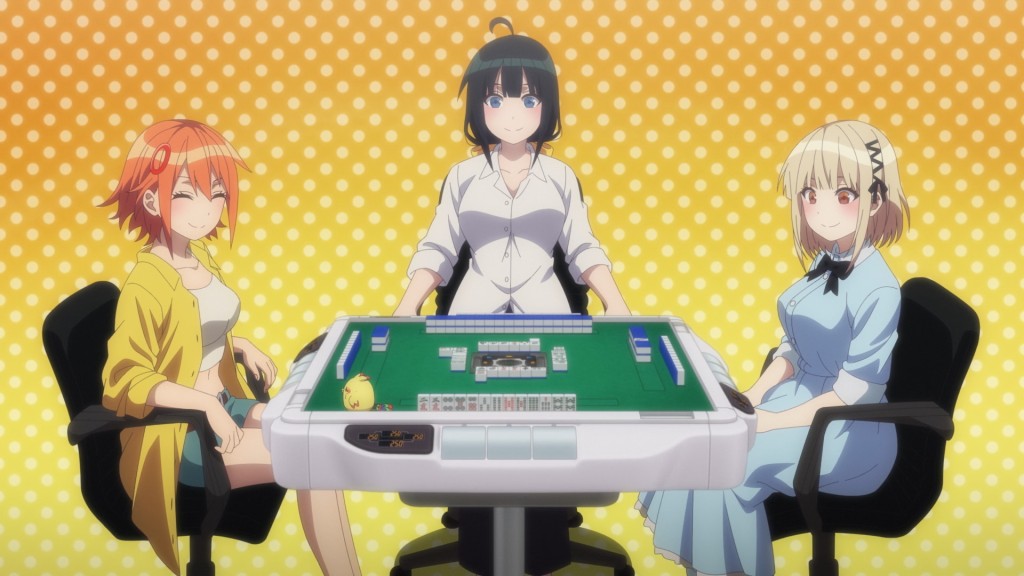
Anyways, they start up a game to show her Chombo’s abilities, leaving Riche extremely impressed. The groups tells her about the time that they let Chombo do everything without assistance and how he was left exhausted.

Seeing the hand that Chombo has as he is nearly dead, he is already in tenpai on a 1-4 man ryanmen wait and in riichi based on the sideways tile. Based on the discards, Chombo is sitting in the west seat, so he doesn’t get any dealer bonuses.
Assuming he doesn’t have any initial dora, he has at least
- Riichi(1)
- Pinfu(1)
- Red Dora 1
If he wins on the 4 man, he will also add All Simples(1). If he draws it himself he will add Fully Concealed Hand(1). Because he is in riichi, he will also get access to uradora.
In short, a win here would be at least 3,900pts with a chance to upgrade it to 8,000pts or even 12,000pts.
If you look closely at Izumi’s discard pile, she discarded the 1 man, meaning that Chombo has won for 3,900 before looking at the uradora.
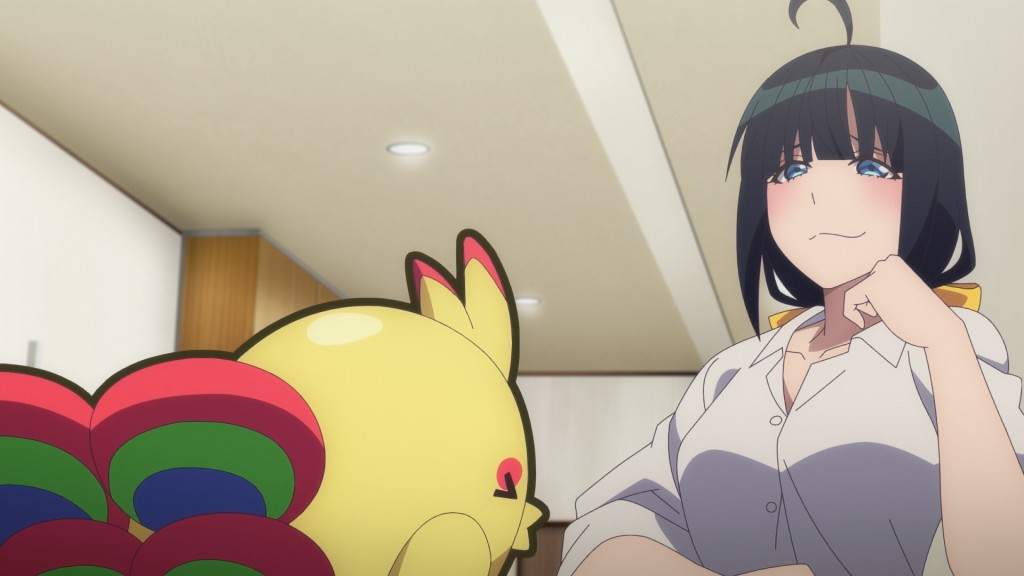
Wanting to see Chombo play without help, they play a round where he does exactly that.
It might just be mahjong-wired brain, but when Chombo begs them not to make him play by himself, it sounds like he is saying “yamiten”. Yamiten (闇聴, ヤミテン) is another word for damaten (黙聴, ダマテン) (often just shortened to dama). When a player is dama, they have a closed hand that is ready to win but has not called riichi. In short, they are staying quiet.
Riche Plays
After Chombo exhausts himself, it’s Riche’s turn to play.
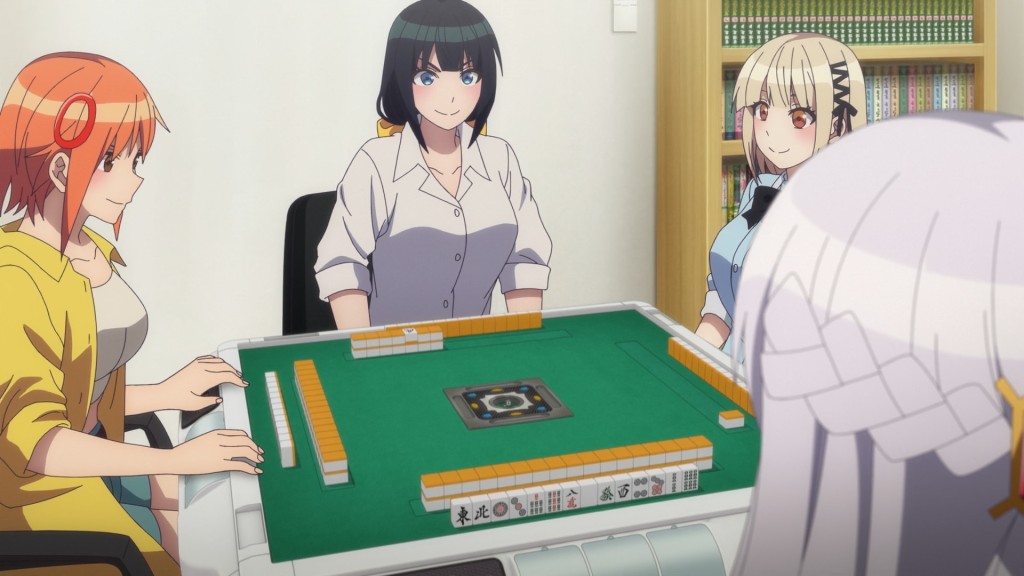


Starting as the dealer, she has an absolutely trash hand. 6-away from any sort of hand, whether the standard shape or Thirteen Orphans or Seven Pairs (the other exception to the standard shape).
After playing a bit in silence, Nashiko tries to impress Riche by saying that she is more skilled than she appears. Riche accepts the challenge and the two battle.
With a smug look, Nashiko calls a riichi late in the game with only three more draws for herself. Though she does have a chance at more value, she can lose her 1,000pts wager if she does win by the end of the hand (when all the tiles are exhausted).
This riichi call also shows up in the opening with a colour filter.
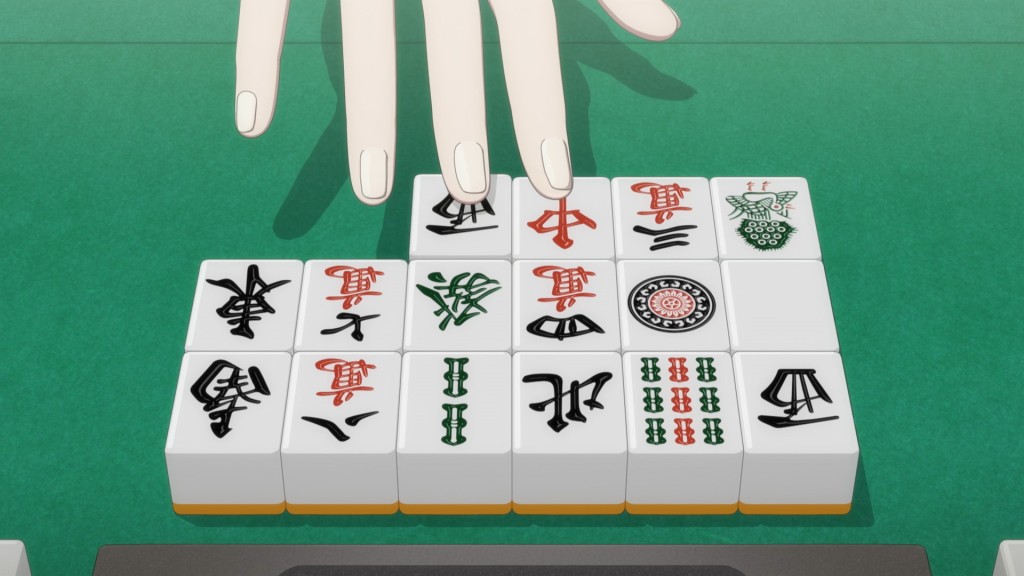
Drawing a west and seeing two already discard, Riche discard it and is surprised when it deals in.
The difference between Nashiko’s and Riche’s discard piles is clear. Riche’s discard pile is neat and tidy with all the tiles upright, while Nashiko’s is a bit messier and some tiles are differently oriented. Nashiko’s discard pile is much more closer to reality.

With the help of Chombo, Nashiko’s hand is calculated as:
- Riichi (1)
- Ippatsu (1) (winning within 1 turn of riichi)
- Red Dora 1
With the closed ron (30 fu) and the pair wait (2 fu), she has 32 fu rounded up to 40 fu. With a non-dealer 3 han/40 fu, it is worth 5,200pts.
The choice to wait on the west is interesting. Before the riichi, we can assume her hand is this:

Here, Nashiko has two different wait options:
- Discards the west and wait on a 2-5-8 pin wait (3 types). This also gives All Simples.
- Discard the 2 pin, 5 pin or 8 pin and wait on the west (1 type, 1 tile)
Nashiko chose to forgo the wider wait and went for a hell wait.
A hell wait (地獄単騎, jigoku tanki) is a pair wait on a single tile where 3 of them are already visible to the player (i.e. 2 in discards or calls, 1 in the hand). The benefit of choosing such a wait is that an opponent who draws it is very likely discard it. Especially if it’s an honour, the tile can only ever be made into a pair. The downside is that it there is only a single tile that they are waiting on and it could be stuck in the dead wall (the 14 tiles that are inaccessible for drawing).
Originally, this type of wait was only referred to as such if you are waiting on the west. This is because the Chinese word for west (西, Xī) sounds like the word for death (死, Sǐ). This is also why hands used to be aborted when four wests were discarded.
In the greater mahjong community, the west tanki is infamous. In the M-League 2019-20 season, Team Raiden player Kurosawa Saki won a Single-Wait Four Concealed Triplets waiting on the west off of Kadokawa Sakura Knights (yes, the same Kadokawa that publishes manga and makes anime) player Uchikawa Kotaro in the last hand to jump all the way up to 1st place. The moment was so legendary that they took that west and put it in a display case at the M-League Pop-Up shop.
Nashiko continues the charade, saying that she rigged the wall in her favour (despite it being impossible with a shuffled automatic table).
This type of play is reminiscent of the playing style in Akagi (アカギ) by Nobuyuki Fukumoto, where players will intentionally wait on “worse” waits and do other unconventional tricks in order to get into the head of their opponent.

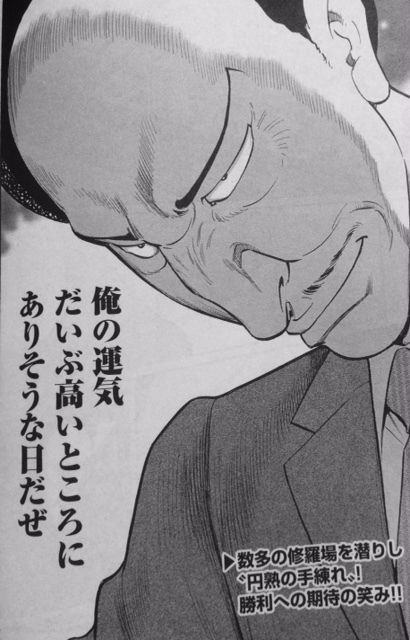
“My luck is truly spectacular today” (私の運気だいぶ高いところにありそうな日だよう, Watashi no unki daibu takai tokoro ni ari-sōna hida yō) is a variation of a quote said by Goro Hakkaku (八角 五郎) in the manga Tenpai (天牌) written by Shinmei Minegishi (嶺岸信明).
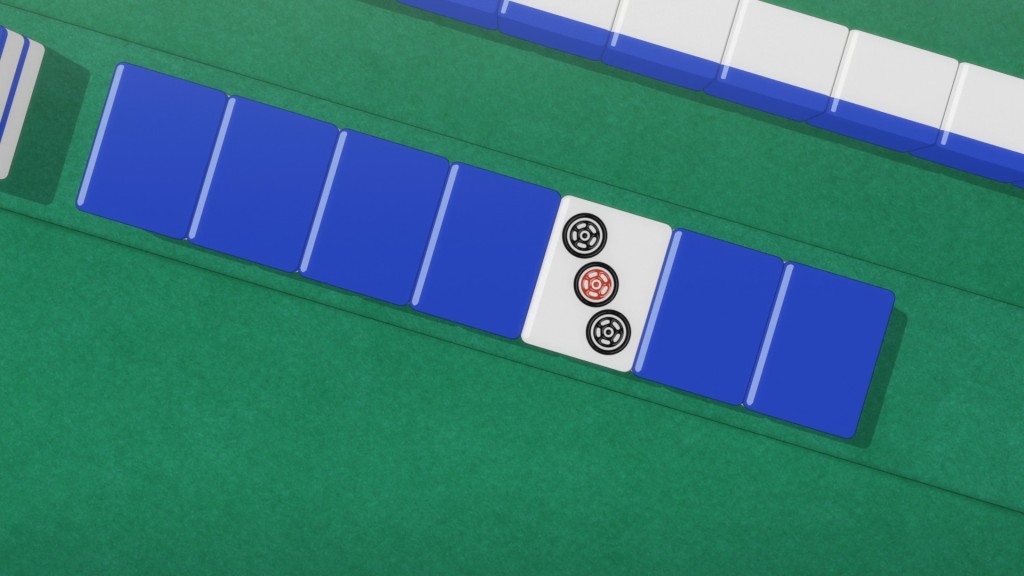
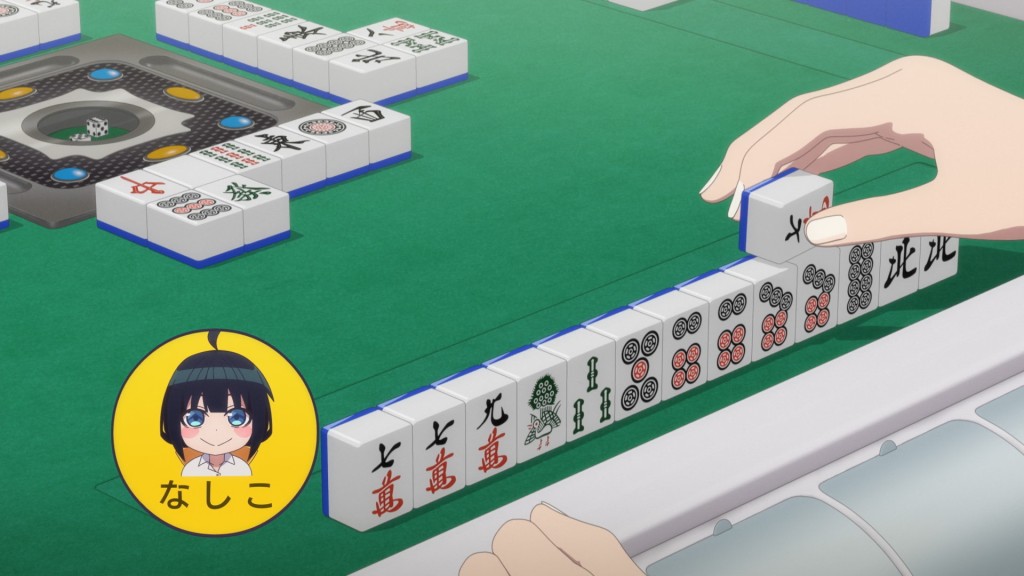
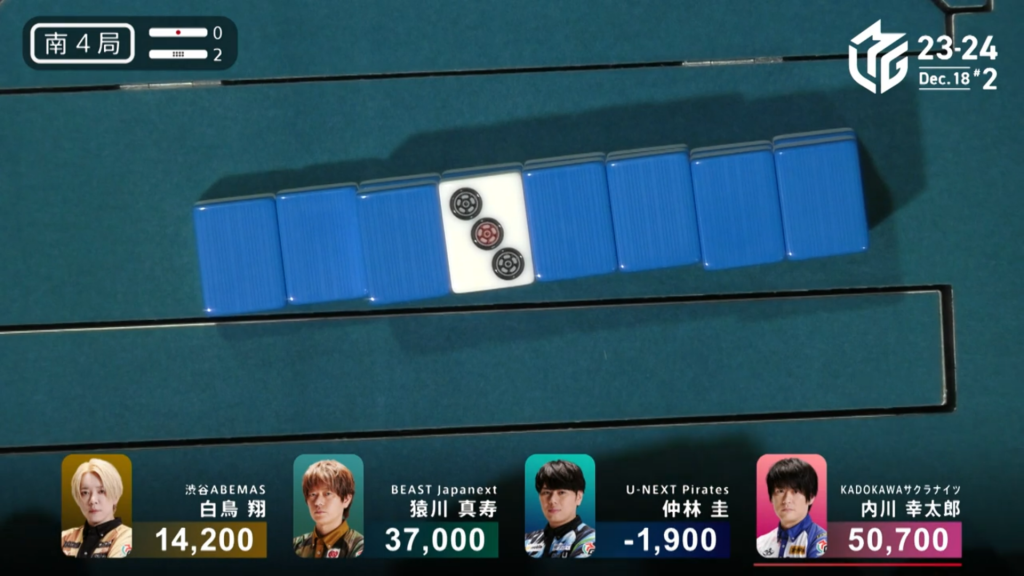
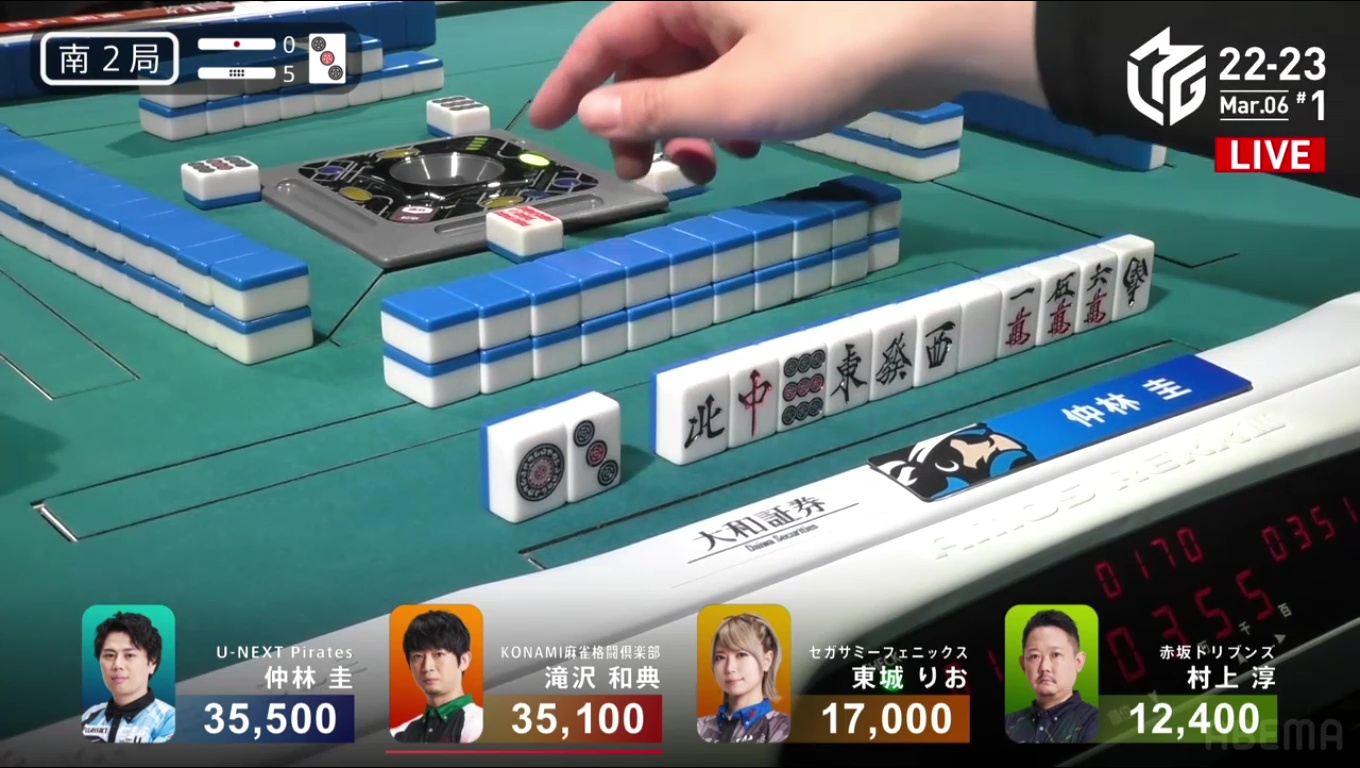
The next few shots simulate the style of camerawork that exist in real-life professional games. A camera is placed above to give an overview shot and a view of the dora while a camera is placed to the left of each player (or the right side if they are left-handed) to see their hand. Additional cameras may be used to capture the players’ facial expressions.


You will notice that she puts the tile on top. In televised matches, it’s easier for the cameras to see the tile if it is put on top, as well as to make sure that the freshly-drawn tile is kept separate (it is public information whether you discarded the tile you just drew or not).
With the 7 man draw, Nashiko gets into tenpai on a 2 sou. She has the correct shape, but doesn’t have a yaku. With no yaku, she will not be able to call ron off another player. However, she would be able to win by drawing it herself because she would have the yaku Fully Concealed Hand.
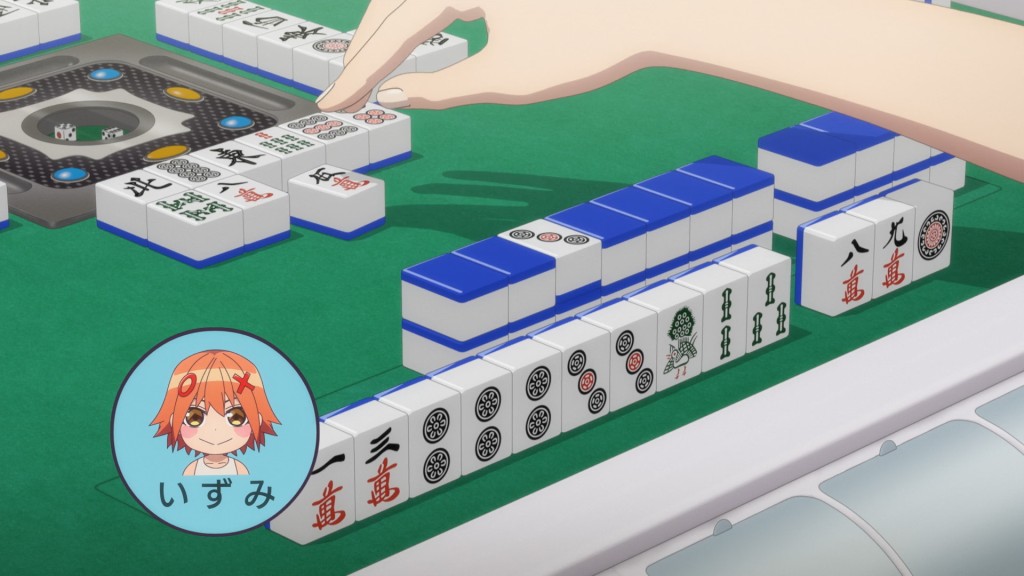

With Izumi’s hand, she has a chance at a 1-2-3 Mixed Triple Sequences. In order to give herself a higher chance of achieving it, she gets rid of the 5 man. This loses some efficiency (the 1p and the 3p both keep her to 1-shanten and allows for more tiles to get to tenpai), but it more or less secures the Mixed Triple Sequences. If she had kept the 5 man and then drawn the 4 man, then she would have no yaku and would have to riichi if she wanted to get a win. If she discards the 3 pin, it would give her the chance to get a 1-2-3 Mixed Triple Sequence, but runs into the issue of not being able to easily accept the 4 pin dora. By discarding the 5m, she makes sure that she has value in her hand and the ability to accept future value.
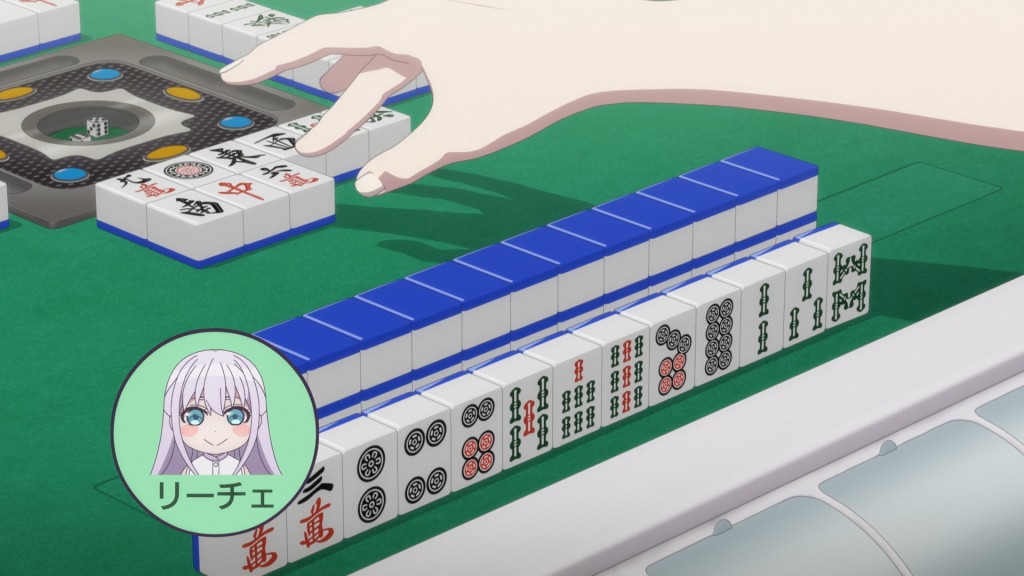


Simply by the way she has her hand sorted, it’s clear that she is experienced. While most starting players will sort their hands by suit, experienced players will divide their hand into blocks instead. They may also mix some things up so their opponents can’t get any information from the position they discard from (for example, discarding a 4 from the very far left side might give away that you don’t have a 1, 2 or 3).
Looking at her hand, she has two isolated tiles: the 6 man and the 5 sou. Though they don’t help the hand out right now, looking ahead to the future is important. In the souzu suit, there is a potential to go for a Full Straight (having the sequences 1-2-3, 4-5-6 and 7-8-9 of the same suit). With this potential, we should keep the 5 sou and discard the 6 man, which is exactly what she does.
The way she switches her tile and discards it (though should not be done in competitive play) indicates skill with tile handling. Especially impressive for someone who hasn’t touched tiles in a few years.
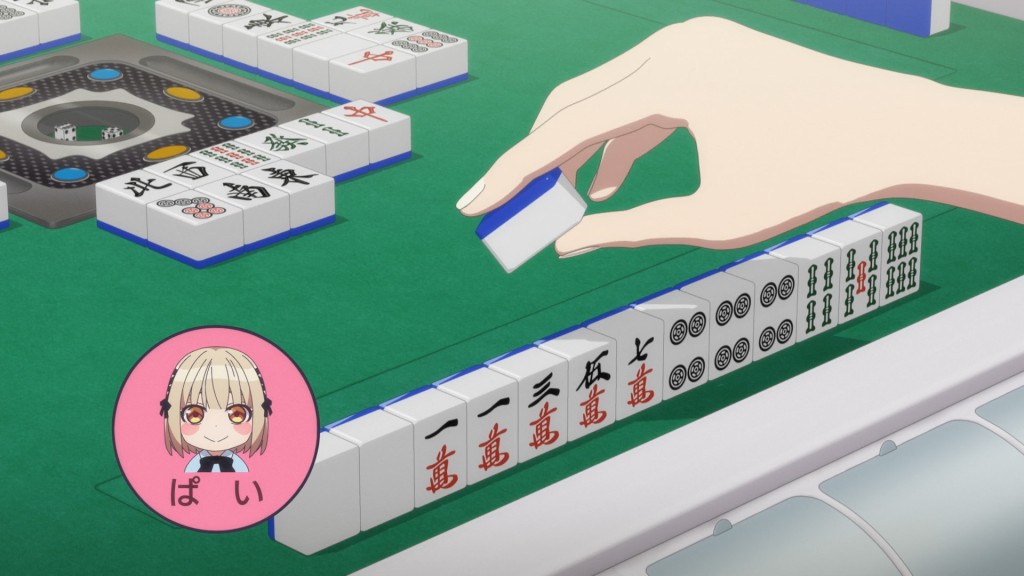

We can’t quite see the tile that Pai draws, but she does have a decent hand. Sitting 1-away from tenpai with a triplet of the 4 pin dora, she would have at least a mangan (12,000 as the dealer) if she wins. To get to tenpai, she needs to draw a white dragon, a 1 man, a 2 man, a 4 man or a 6 man. Of course, if the white dragon comes out before then, she should call pon for tenpai.
When Riche discarded the 6 man, Pai chose not to call chii (claim it to complete a sequence. In this case, she would be creating a 5-6-7 man sequence). If she called chii, she would be tenpai, but would only be allowed to win off the white dragon (since she would not have any yaku otherwise). If the 1 man comes out from another player, she would be in temporary furiten (not allowed to call ron until her next discard). If she draws the 1m herself, she would be in furiten as well and would not be able to call ron until she changes her wait. With one of the white dragons already discarded, she would only be waiting on that one.
However, calling the 6 man does have the benefit of being tenpai. Both Izumi and Riche are discarding middle tiles, meaning that they are getting close to tenpai. With the white dragon being impossible for them to incorporate into their hands, they would be forced to either deal in or abandon their hand. Pai waiting on the white dragon now would give her more power over the table and a faster hand.
A kanchan (カンチャン, middle wait) is a wait where you have both ends of a sequence but need to fill in the middle. For example, if you have a 4 sou and 6 sou, you would have a 5 sou kanchan. If you draw the 5 sou, then you would have a 4-5-6 sou sequence
A samenchan (三面張,サンメンチャン) is technically any wait waiting on three different tiles. However, it is typically used to describe a 3-sided wait where you have have five tiles in a row and waiting on the middle tile or the two ends. For example, a player who has 2-3-4-5-6 pin in their hand has a 1-4-7 pin sanmenchan.
- The 1 pin will complete a 1-2-3 pin sequence and the 4-5-6 pin sequence already in the hand
- The 7 pin will complete a 5-6-7 pin sequence and the 2-3-4 pin sequence already in the hand
- The 4 pin will complete either the 2-3-4 pin sequence or the 4-5-6 pin sequence, with the other already being in the hand.
This particular quote is a reference to the 36th episode of the show Nekkyou! M-League (熱闘!Mリーグ). In this specific episode, the interviewer asked elementary students what they liked about mahjong (麻雀のどんなところが好き?, Mājan no don’na tokoro ga suki?). One of them says that they like how unreasonable it is (理不尽なところ, Rifujin’na tokoro). They then elaborate “Like how a three-sided wait can lose to a middle wait” (三面チャンがカンちゃんに負けるところ)
Speaking of unreasonableness, Nashiko decides to call ron. Chombo and Izumi tell her she has no yaku and Nashiko is exasperated.
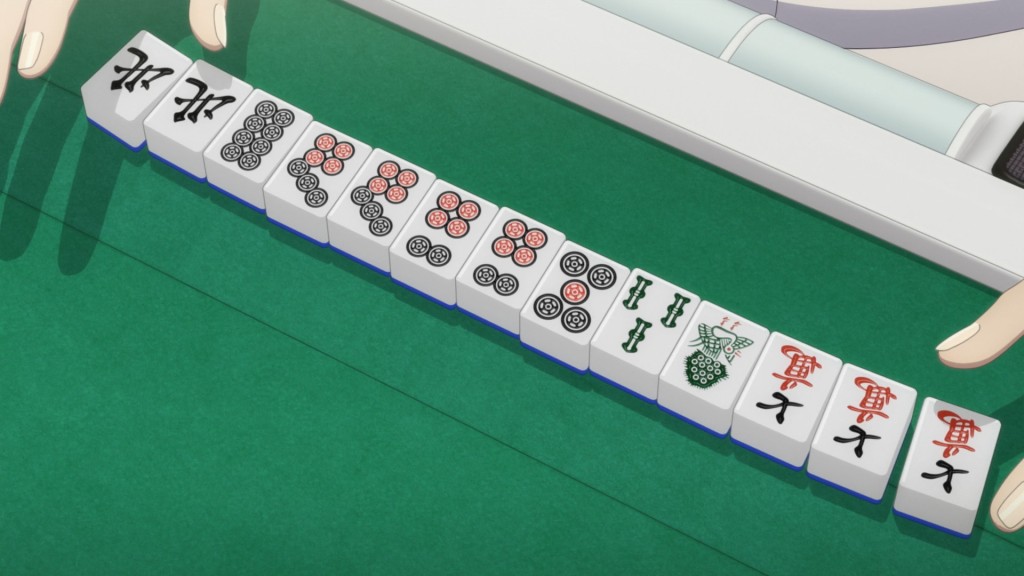

As explained in my episode 1 review, a yaku (役) is a hand pattern that gives the player the ability to win. In this case, Nashiko doesnt have a yaku so she isn’t allowed to win. Since she declared a win when she can’t, she is supposed to receive a chombo. If she had called riichi (which she would be allowed to do since she has a closed hand and is in tenpai), she would have fulfilled the yaku requirement.
Even with the bad plays and antics of the players, we are reminded why we play: to have fun and have a good time.

Let’s have a little fun ourselves. From the moment that Nashiko calls ron, we can tell what what Riche has drawn. Recall that this was her hand:

What tile did Riche draw to discard the 2s?
Breaking a two-sided wait is uncommon. If she drew something unrelated, she wouldn’t have broken up the good shape. Therefore, it must be something connected. If she drew the 2 sou, it would be more efficient to discard the 5 sou, so we can rule that out. Since she still has a 3 sou and 5 sou in her hand, she must have picked up something that connects both of them, which leaves us with the 4 sou as the only reasonable draw.
Drawing it would create a 2-3-4-5 sou shape, one tile too many for a sequence. She would either have to discard the 5 sou or the 2 sou to get to tenpai. In general, tiles closer to the edge (i.e. closer to 1 or 9) are safer than the ones in the middle. This is because those tiles have less utility. For the 2 sou, it can be used in only three different groups (a 1-2-3 sequence, a 2-3-4 sequence or a 2-2-2 triplet). For the 5 sou, it can be used in four different groups (a 3-4-5 sequence, a 4-5-6 sequence, a 5-6-7 sequence or a 5-5-5 triplet). Since the 2 sou has fewer shapes that it can deal into, it makes sense why Riche would discard the 2 sou in this situation.
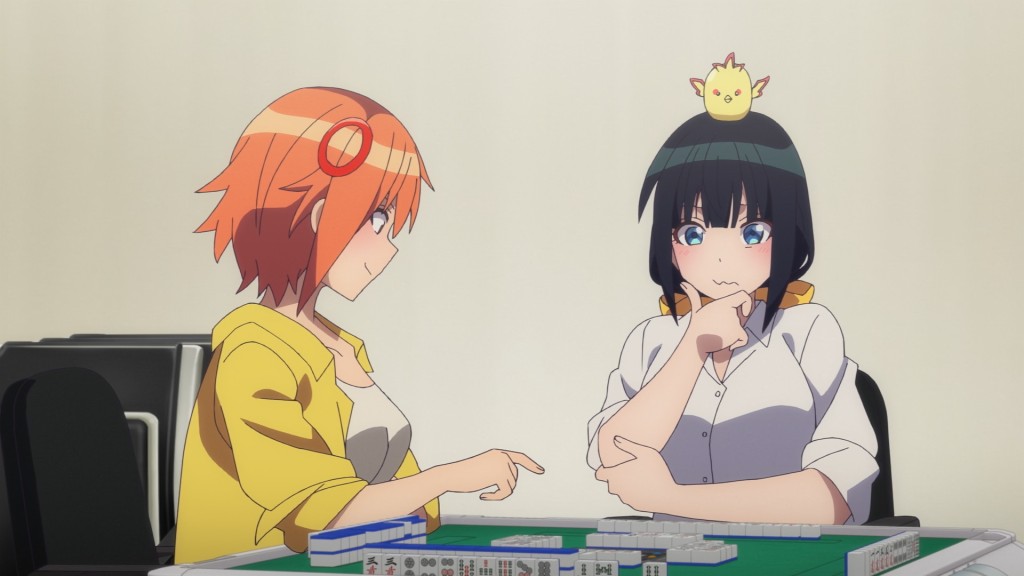
Our suspicion that she drew the 4 sou is confirmed a bit later.
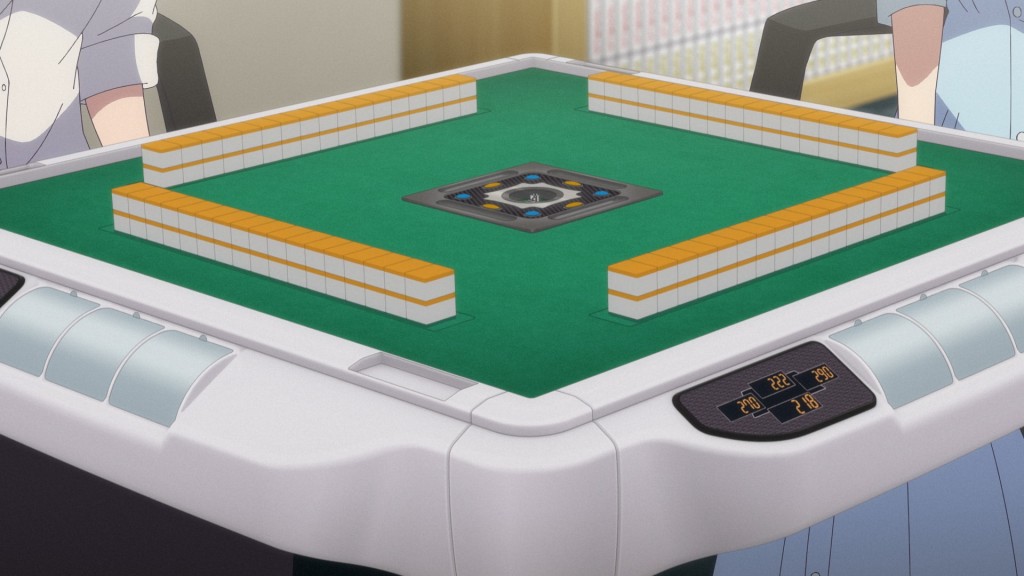
When a chombo occurs, the hand is reshuffled as if nothing happened (the dealer stays the dealer, any riichi declarations are returned). Chombos are typically penalized, though the penalty may differ depending on who and where the game is happening (whether it’s a group of friends or a tournament). After all, nothing happened in the first episode and they let the game continue. However, we can deduce the penalty through the scores.
At the start of East 1, everyone has 25,000. When Nashiko wins the 5,200, the scores would be (from starting dealer)
- Riche (Dealer): 19,800pts (25,000pts – 5,200pts)
- Pai : 25,000pts
- Nashiko: 30,200pts (25,000pts + 5,200pts)
- Izumi: 25,000pts
After Nashiko “won” with a no-yaku hand, the scores are as follows:
- Riche: 21,800pts
- Pai (Dealer during no-yaku hand): 29,000pts
- Nashiko: 22,200pts
- Izumi: 27,000pts
So what happened? Riche and Izumi gained +2,000pts, Pai gained +4,000pts and Nashiko lost -8,000pts. This means that they implemented the reverse-mangan penalty (満貫払い, mangan barai, lit. “mangan refund”), which is typical in casual settings. A normal mangan tsumo has a player getting paid 2,000pts by the non-dealers and 4,000pts by the dealer. However, a chombo committed in casual may result in a reverse-mangan penalty where the offending player has to pay the non-dealers 2,000pts each and the dealer 4,000pts each (or if the offending player is the dealer, they will pay 4,000pts to each player).
Despite them being new players, they make sure their friends pay for their mistakes.
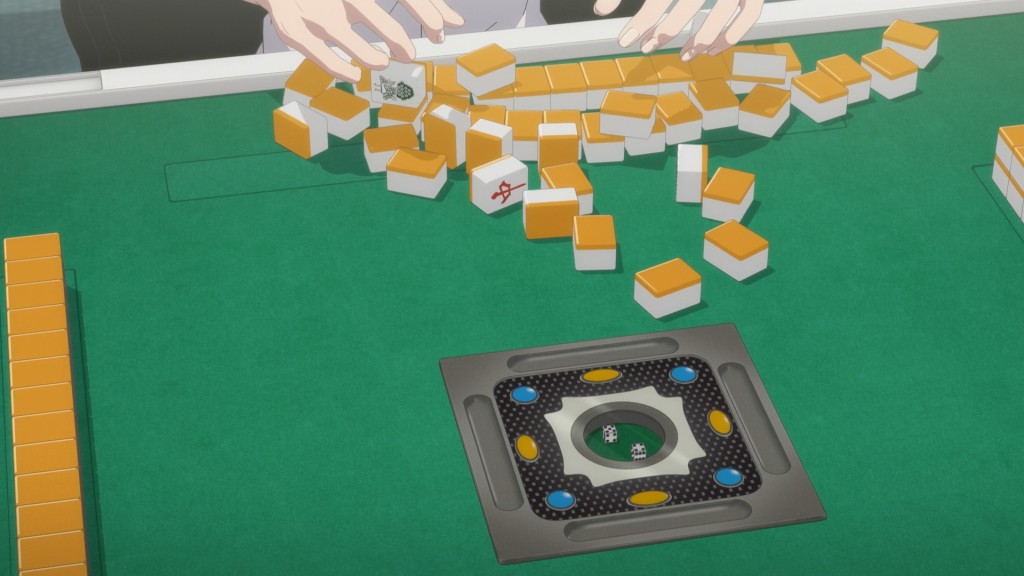
With the need to impress, she tries to do the tsubame gaeshi move. As expected she fails miserably and everything explodes. With such a grievous disruption of the game, Pai awards her with a massive chombo. In tournaments, any form of cheating would result in immediate expulsion.
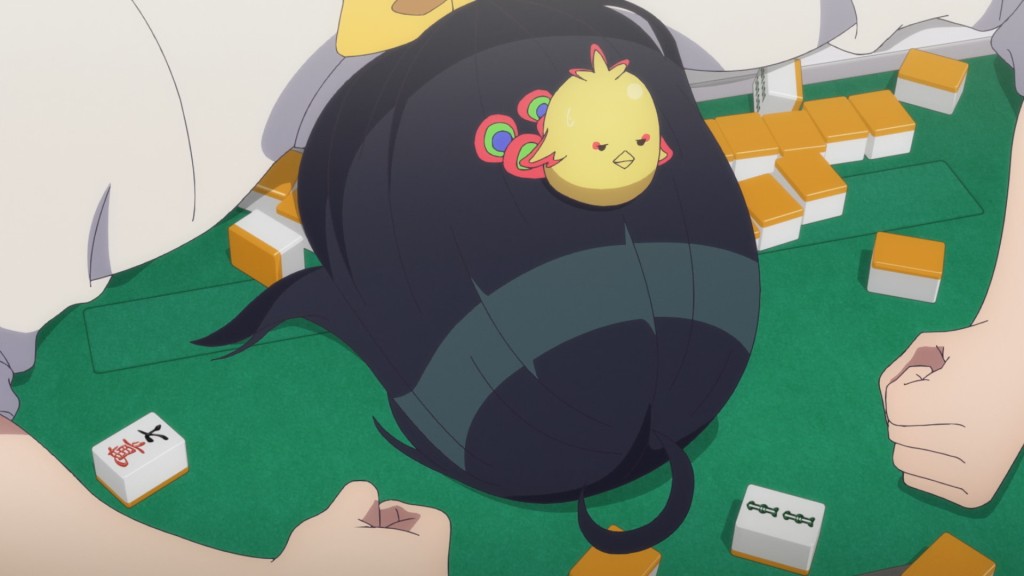
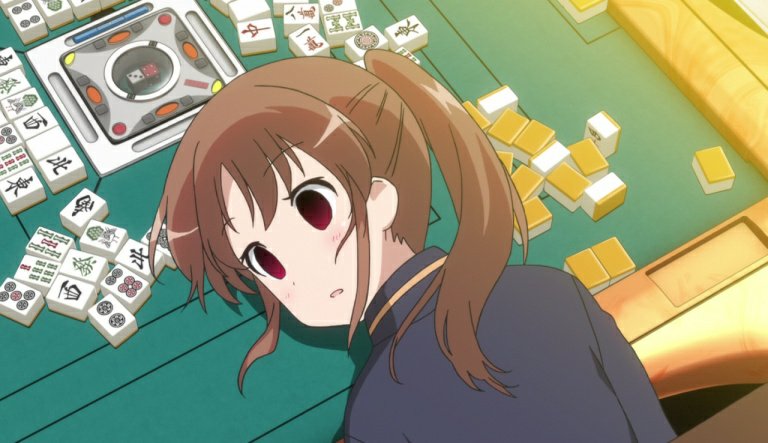
Feeling extremely disappointed and dejected by her failure, she plops her head on the table. After seeing Riche laughing and having a good time, the group smiles and joins in.
Break Time

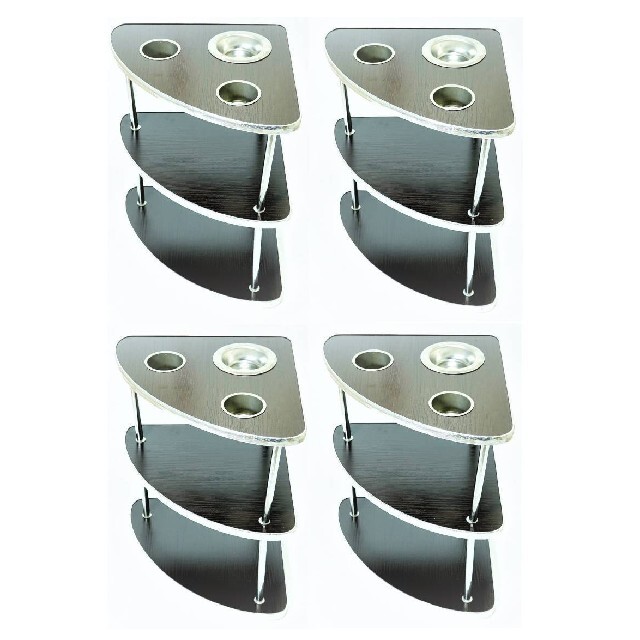
After Nashiko say that she needs a break, it turns into after-mahjong tea time. Since putting food and drinks on an autotable would be blasphemy, Izumi recommends that they use the side tables.
Side tables (サイドテーブル, saido tēburu) are placed at each corner of the tables for placing food and drinks (with the player using the one on their left). In jansous where smoking is allowed, they may also have an ashtray to put your cigarettes. Since these tables do have ashtrays, we can assume that smoking might have been allowed here as well.
After they finish preparing, they sit down and eat. When they are finished eating, they notice the sun is setting and call it a day.
Closing
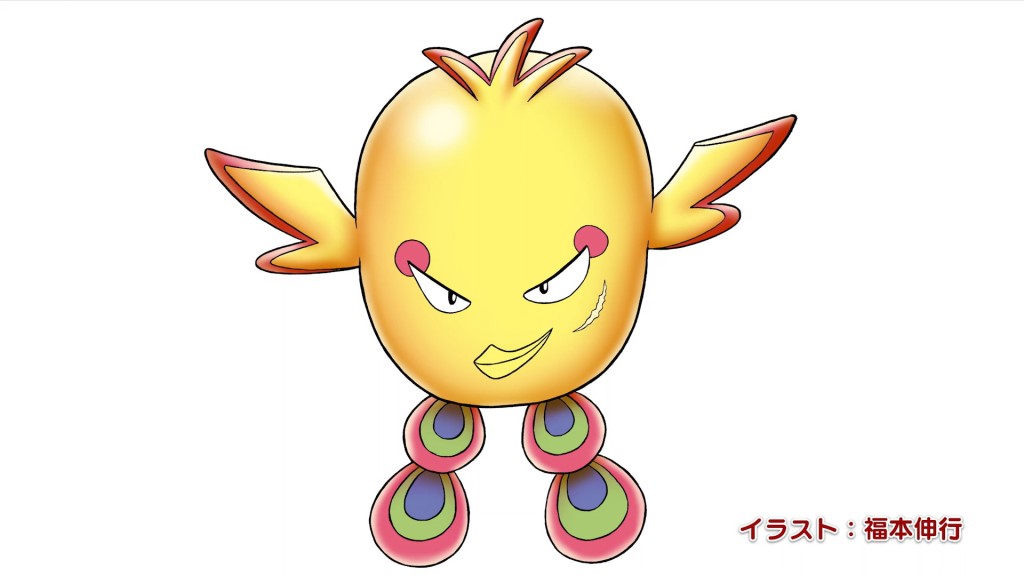

The ending art was drawn by Nobuyuki Fukumoto (福本 伸行), famous for creating mahjong mangas like Akagi (アカギ), Kaiji (カイジ) and Ten (天). Currently, his manga Mamiya (マミヤ), which is a sequel to Ten, is being serialized in the mahjong magazine Kindai Mahjong.
The streak on the left side of Chombo’s face is a reference to Kaiji’s scar, a scar that he received
Kaiji spoilers within
when he cut his ear with a mirror in chapter 119 of the manga and episode 20 of the anime. Maybe that’s why Chombo doesn’t have ears…
And that’s all for this episode! Next episode, the mahjong crew becomes the cooking crew!
If this anime is getting you interested in mahjong, consider joining a local riichi mahjong club to learn more about the game!

